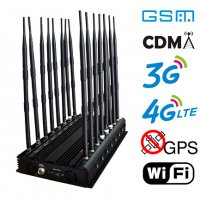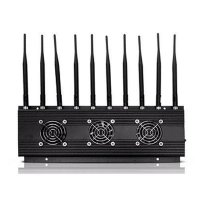In today’s world, technology has become an integral part of our lives. It has brought numerous benefits to our society, including instant communication, easy access to information, and improved productivity. However, as technology becomes more prevalent, it has also brought new challenges, especially in classrooms. Students are increasingly using their cell phones during class time, causing disruptions, and hindering the learning process. This has led many educators to wonder if cell phone jammers are the answer to distraction-free classrooms.
Here we will explore the use of cell phone jammers in classrooms and whether they are an effective solution to the problem of student cell phone use during class time.
The Negative Impact of Cell Phone Use in Classrooms
Cell phone use in classrooms has become a significant problem for educators. Students use their cell phones to text, browse social media, and play games during class, causing distractions and interrupting the learning process. According to a study by the Pew Research Center, 58% of American teenagers own a smartphone, and 94% of them use their phones daily. This high usage rate of smartphones has led to a growing concern among educators about their impact on classroom learning.
Studies have shown that cell phone use in classrooms can lead to lower grades, reduced comprehension, and decreased memory retention. In a study conducted by the University of Arkansas, students who used their cell phones during class scored significantly lower on tests than those who did not use their phones. Furthermore, students who used their phones during lectures had a lower comprehension of the material covered in class.
Cell phone use in classrooms not only affects the learning process of individual students but can also disrupt the entire class. When students use their phones during class, it distracts other students, leading to a breakdown in classroom discipline. This can cause a loss of valuable instructional time and can also affect the quality of education that students receive.
The Use of Cell Phone Jammers in Classrooms
To combat the problem of cell phone use in classrooms, some educators have turned to cell phone jammers as a potential solution. A cell phone jammer is a device that emits signals in the same frequency range as cell phones, effectively blocking all cell phone signals in the area. The use of cell phone jammers in classrooms has been controversial, with proponents arguing that they are an effective way to promote a distraction-free learning environment and opponents arguing that they violate the rights of students.
Advantages of Cell Phone Jammers in Classrooms
One of the main advantages of using cell phone jammers in classrooms is that they can create a distraction-free learning environment. By blocking all cell phone signals in the area, students are unable to use their phones during class, reducing distractions and improving the learning process. This can lead to higher test scores, better comprehension, and increased memory retention.
Another advantage of using cell phone jammer is that they can help to promote classroom discipline. When students are unable to use their phones during class, it can reduce disruptions and create a more focused learning environment. This can also help to improve the overall quality of education that students receive.

Final Thoughts
While cell phone jammers may seem like a tempting solution to create distraction-free classrooms, there are several important considerations to keep in mind. First and foremost, the use of jammers is illegal in many countries and can lead to severe consequences. Additionally, there are potential safety concerns related to jamming signals, as well as technical challenges in implementing a jamming system that can effectively target only cell phones while leaving other communication devices unaffected.
Instead of relying on jammers, educational institutions may want to consider alternative strategies to minimize cell phone distractions in the classroom. These could include setting clear rules and expectations for cell phone use, creating designated phone-free zones or times, and incorporating technology into the classroom experience in ways that enhance learning rather than detract from it.
Ultimately, the decision of whether or not to use cell phone jammers in the classroom should be carefully considered and weighed against the potential risks and benefits. By taking a holistic approach to addressing the issue of cell phone distraction, educators can create an environment that fosters learning, engagement, and productivity for all students.

